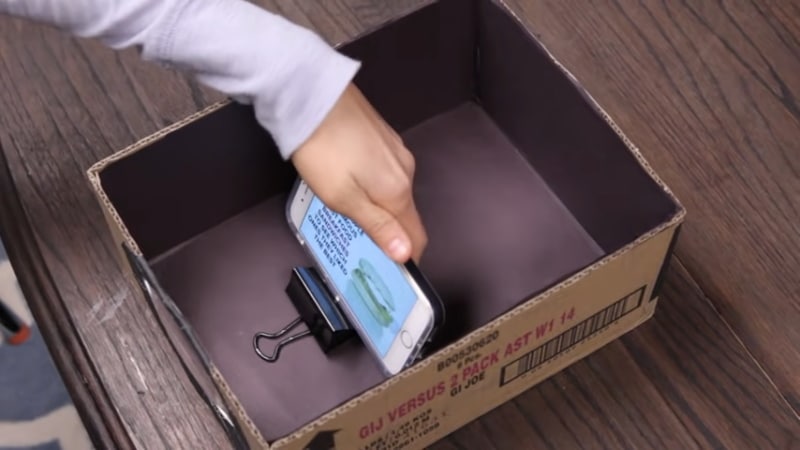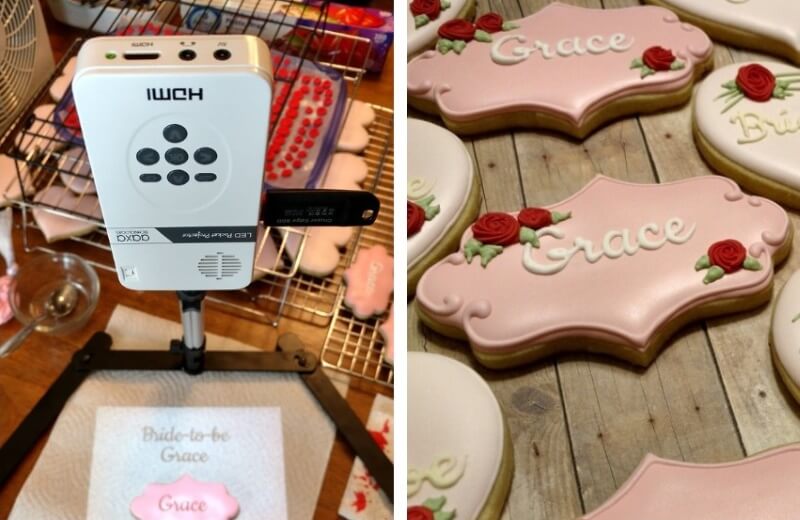Can you recall all the moments you’d been in school, at work or home and you needed to share your screen, but you were computer-less? Sucked right? Well, you can actually stream videos and project files and pictures from your iPhone on a larger screen. A larger screen can be a TV or a projector. A projector comes highly recommended by experts and most reviewers because it is way larger than a TV and is super-convenient in terms of portability. One of the most popular models is the KODAK Luma 150 Pocket Projector. It is designed for easy portability and an unrivaled versatility as it allows both wireless and wired connections to your iPhone.
To connect an iPhone to a projector, you don’t necessarily need a projector that is compatible with your iPhone and the lightning port. You can use a traditional projector with a lightning digital AV adapter, an iPhone to projector adapter. It allows you to connect an iPhone to an HDMI cable. There are two main connection options, wireless and cable.
Cable is deemed the easiest and most popular way of connecting an iPhone to a projector. Every modern projector comes with a video cable that you can connect to a laptop, phone or tablet directly. That is exactly what you will use in this case, but because an iPhone doesn’t feature a standard video port, you will have to use an adapter.
There are 2 different types of adapters that you can use to hook up an iPhone to a projector; Lightning to VGA Adapter and a lightning Digital AV adapter. With the VGA adapter, you connect it to the lightning port of your iPhone and a standard VGA video cable. As for the Lightning digital AV adapter, you can connect it to an HDMI cable.
Step 1: The first thing you need to do is ensure you have the correct cable and adapter. Most projectors come with a standard VGA cable, but in case yours doesn’t have one, you can easily get it from your local electronics shop. The next crucial thing is the adapter. Do note that the adapters are different for different iPhone models. The one for iPhone models after November 2012 like 5, 5S, 6, and 6Plus is different from the one for iPhone models before November 2012 4 and 4S.
Step 2: Once you have established that you have the right cable and adapter, you can connect them. All you have to do is connect the VGA cable to one end of the VGA-to-lightning adapter. Ensure the cores of the VGA cable are tight enough for a secure connection.
Step 3: You can go ahead and connect the adapter to your iPhone by simply connecting the other end of it to the charging port of your phone. This will connect your iPhone to the main system of your projector.
Step 4: If your presentation has an audio, you need to enable it. You can achieve this by connecting the audio cable of your projector to your iPhone. The cable goes into the headphone jack of your phone.
Step 5: If your projector is switched to the correct input, you should be able to see your iPhone’s screen projected on its display. You can navigate it as you normally do, to access the app that has your presentation. Here is a quick tip: if you want the audience to only see what you want to present, open the presentation first before switching the projector to the right input.
Step 1: The first thing to do is to insert the adapter’s 30-pin connector into the connector port on your iPhone. All the ports on the adapter are labeled, and the connector port on your iPhone is located on its bottom.
Step 2: Insert one end of the HDMI cable into the HDMI port on the adapter. The port is clearly labelled.
Step 3: Insert the other end of the HDMI cable into the HDMI port on the projector.
Step 4: Switch both the projector and the iPhone ON then press ‘Source’ on the projector until the image from your iPhone screen is projected on its display.
Some Things to Consider: Ensure you buy a cable that is compatible with your projector. You can do so by checking the port or cable on your projector. Remember, a VGA port has a 30-pin cable that is made to connect to a 30-pinhole port that looks like the connector on most computer monitors. An HDMI is different. It uses HDTV-standard thin.
Thanks to technological advancement, you can actually ditch the cables and connect your iPhone to your project wirelessly. However, how you go about it largely depends on the model of your projector.
Most times the connection happens via Wi-Fi, but some models might require you to connect a receiver on the projector and a transceiver on the iPhone to allow a wireless connection. You can check your projector’s model number on its manufacturer’s website to see if it supports wireless connections. So, if your projector does support wireless connection, here is how you will connect it to your iPhone:
Step 1: First, you have to establish that your projector is using the same network as your iPhone. The settings vary across different projector brands. You can check the user manual if at all you’re unfamiliar with the process of connecting to the same network.
Step 2: Launch the Wi-Fi doc on your iPhone by locating and tapping on it. Its icon has the Wi-Fi symbol. If you don’t have it on your phone, you can easily download it from the App store.
Step 3: When you open the Wi-Fi doc application, it will scan the nearby devices automatically then let you know if you can connect. Locate and connect to your projector.
Step 4: Once you are connected, you will see the file type options displayed by Wi-Fi doc. They include pictures, PDF, documents and so forth. Choose your presentation’s file-type. Like if you want to show pictures, tap on ‘Pictures’.
Step 5: Wi-Fi doc will display all the files of the ‘file-type’ you picked. Choose your presentation from the list and tap on it to open. When opened, it gets displayed on the projector.
Learning how to connect your iPhone to an Epson or VGA projector is one thing, but what if your new workplace has an Apple TV in place of an expensive projector and you need to make a presentation on short notice?
In such a case, you can conveniently use Airplay technology Trusted Source How Does AirPlay Work and What Devices Can Use It? With Apple’s AirPlay proprietary technology, you can stream documents to a printer, music to speakers, videos to a TV, and a whole lot more. www.lifewire.com which is Apple’s wireless media streaming, to send your presentation from your iPhone to the Apple TV. This is how you do it:
First off, you want to make sure that your iPhone and Apple TV are connected to the same network. Then you can open the control center on your phone and locate and tap the screen mirroring button. Tap on the name of your Apple TV on the options displayed. At this point, if you have a new iOS version, your iPhone’s screen should appear on the TV connected to your Apple TV. If you have an older iOS version, then you will have to turn mirroring ON and tap done to start your presentation.
Screen mirroring is a super convenient way of sharing your iPhone screen on a projector. It is highly preferred because it is incredibly easy to go about, plus, it has additional features like the ‘Do not disturb’ function that can help you save face big time. You know those embarrassing moments when you have several chrome tabs, your wallpaper or things you don’t want to share visible on the projector? The function comes in handy.
The screen mirroring features on an iPhone are Airplay and Airplay Mirroring. With the latest Airplay 2 iteration, you can stream videos and stereo audios to multiple speakers in multiple rooms and still get to control everything from your iPhone.
Airplay mirroring allows you to share your iPhone or iPad screen on your Apple TV or Airplay compatible smart TV.
If your TV is not Airplay compatible, you can use Allcast. Essentially, the app works like Airplay but for devices that don’t support Airplay. All you have to do is download it, launch it then select then select the device onto which you want to mirror your iPhone screen.
You can actually turn your iPhone into a computer instantly with the myriad Apple apps and programs available. Once you learn how to connect your iPhone to a projector, you will have your entire world of PowerPoint presentations a tap or swipe away. We have covered the essential hacks and tips you might need to connect an iPhone to any type of projector.
Cable is the most popular and easiest method of connection. So if you are new to Apple products and you are wondering how to connect your iPhone 5S to a QKK projector think cable first. It almost never disappoints and is highly reliable. However, everyone seems to be ditching wires, and in a few more years, cable connections will be so ’20th century’. Apple has a couple of handy solutions for wireless iPhone to projector connections including Allcast and Airplay, and we can’t wait to see more from them in the future.





